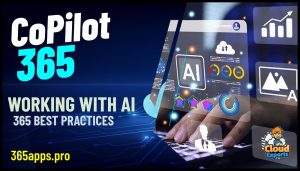 You’ve heard of large language models and how they power Copilot. But what are small language models (SLMs) and why are they the next evolution of generative AI?
You’ve heard of large language models and how they power Copilot. But what are small language models (SLMs) and why are they the next evolution of generative AI?
Donald Kossmann (Vice President, Business Copilot AI) shares how Microsoft researchers are using SLMs to create agile generative AI models that perform as well as LLMs and are affordable enough for any organization to curate and fine-tune.
Donald Kossmann highlighted the importance of small language models in the evolution of generative AI.
He explains how these models are more efficient in terms of training and deployment compared to larger models, discussing the potential applications of small language models in various industries, including healthcare, finance, and customer service.
He emphasizes the role of Microsoft’s Business Copilot Ai in developing and implementing these innovative AI solutions, showcasing real-world examples of how small language models are enhancing productivity and decision-making processes.
Small Language Models vs. Large Language Models
In the realm of Natural Language Processing (NLP) and Artificial Intelligence (AI), language models play a crucial role in understanding and generating human language. Small Language Models and Large Language Models are two categories of models that serve different purposes and have distinct characteristics. Let’s delve into what sets them apart and how they compare.
Small Language Models
Small Language Models are relatively compact models designed to perform specific language-related tasks efficiently. These models have fewer parameters compared to their larger counterparts, making them suitable for applications where computational resources are limited or where real-time processing is essential. Small Language Models are commonly used in tasks such as sentiment analysis, text classification, and keyword extraction.
Characteristics of Small Language Models:
- Lower number of parameters.
- Faster inference speed.
- Less complex architecture.
- Suitable for resource-constrained environments.
Large Language Models
Large Language Models, on the other hand, are massive models with millions or even billions of parameters. These models are trained on extensive datasets to capture intricate language patterns and nuances. Large Language Models excel in tasks that require a deep understanding of context, such as language translation, text generation, and conversational AI. However, their size and computational demands make them challenging to deploy in certain scenarios.
Characteristics of Large Language Models:
- High number of parameters.
- Advanced language understanding capabilities.
- Complex architecture.
- Resource-intensive training and deployment.
Comparison
When comparing Small Language Models to Large Language Models, several key differences emerge:
- Parameter Size: Small Language Models have a limited number of parameters, while Large Language Models boast a vast parameter space.
- Performance: Large Language Models tend to outperform Small Language Models in tasks requiring deep contextual understanding due to their extensive training data and complex architecture.
- Resource Requirements: Small Language Models are more suitable for resource-constrained environments, whereas Large Language Models demand significant computational resources for training and deployment.
- Application Scope: Small Language Models are ideal for specific tasks that prioritize speed and efficiency, while Large Language Models shine in applications that demand a high level of language comprehension and generation.
Ultimately, the choice between Small Language Models and Large Language Models depends on the specific requirements of the task at hand. Understanding the strengths and limitations of each type of model is crucial for leveraging the power of language models effectively in various NLP applications.



